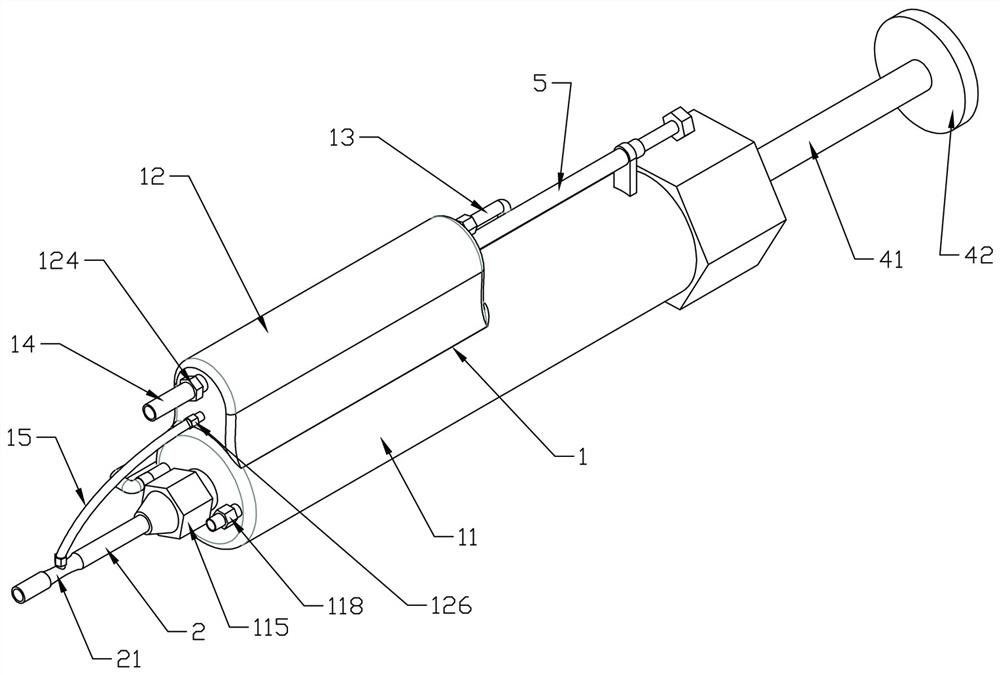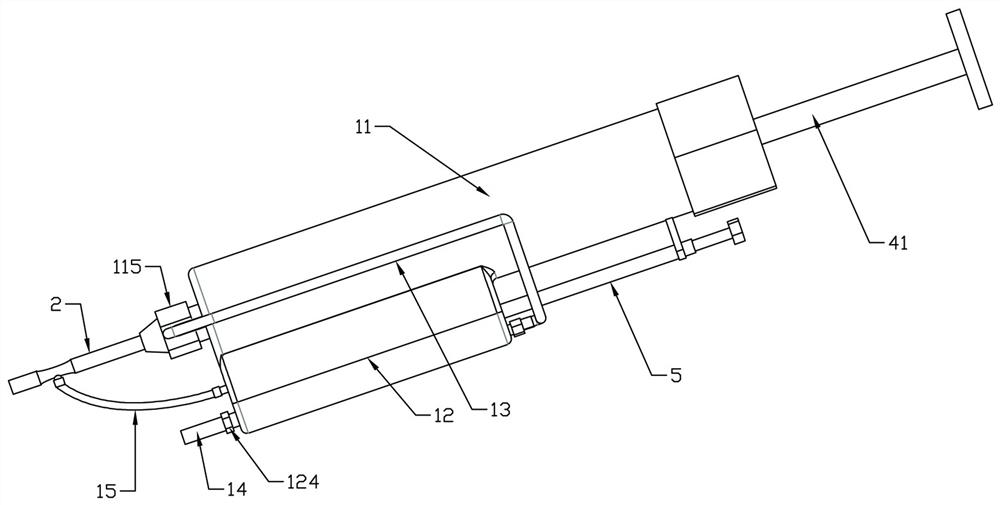Local anesthesia controllable spraying device for clinical anesthesia
A spray device and local anesthesia technology, which is applied in hypnosis devices, anesthesia equipment, nebulizers for treatment, etc., can solve the problems of single function and inability to accurately control the amount of sprayed medicine, and achieve the effect of improving the effect
- Summary
- Abstract
- Description
- Claims
- Application Information
AI Technical Summary
Problems solved by technology
Method used
Image
Examples
Embodiment 1
[0033] Topical anesthesia generally adopts the method of spray anesthesia, that is, the anesthetic is sprayed on the surface of the part to be anesthetized in the form of aerosol through the spray device, so that the skin can quickly absorb the anesthetic. The existing anesthesia spray has a simple structure and uses atmospheric pressure. The handle controls the push pump to push the gas into the anesthetic storage bottle, so that the gas pressure in the bottle increases. When the water nozzle is opened, the anesthetic will be forced out of the bottle by atmospheric pressure; but in actual use, the gas pushed into the anesthetic bottle It can only spray out the anesthetic agent in the anesthesia bottle. It has a single function and cannot accurately control the amount of drug sprayed according to the needs of the operation. During anesthesia, only the medical staff can roughly estimate the amount of sprayed drug. The accuracy is poor, and it is easy to cause excessive or sprayed...
Embodiment 2
[0053] The difference between embodiment 2 and embodiment 1 is that the outer wall of the auxiliary cylinder is axially provided with an observation window that can observe the inside of the drug storage chamber, and the observation window is provided with a scale, so as to facilitate precise adjustment of the depth of the control screw. .
Embodiment 3
[0055] The difference between Embodiment 3 and Embodiment 2 is that a throttling valve is provided on the linkage air pipe used to communicate the exhaust hole with the pressure regulating hole, and the throttle valve is used to adjust the flow rate of the inner channel of the linkage air pipe. There are many ways, for example: a throttle valve is installed on the exhaust hole, the other port of the throttle valve is connected to the linkage air pipe, and the other end of the linkage air pipe is connected to the pressure regulating hole, so that the linkage air pipe can be adjusted during use. According to the demand, the moving speed of quantitative piston linkage driving is controlled.
PUM
 Login to View More
Login to View More Abstract
Description
Claims
Application Information
 Login to View More
Login to View More - R&D Engineer
- R&D Manager
- IP Professional
- Industry Leading Data Capabilities
- Powerful AI technology
- Patent DNA Extraction
Browse by: Latest US Patents, China's latest patents, Technical Efficacy Thesaurus, Application Domain, Technology Topic, Popular Technical Reports.
© 2024 PatSnap. All rights reserved.Legal|Privacy policy|Modern Slavery Act Transparency Statement|Sitemap|About US| Contact US: help@patsnap.com










